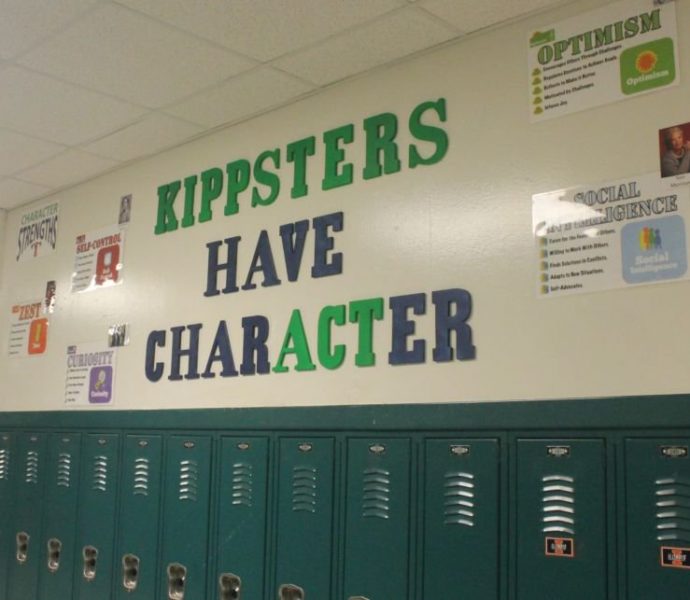KIPP Indy is working to stop kids from disappearing over the summer. It’s a challenge many schools face
ByHafsa Razi
Read the full article at Chalkbeat.org >
Every summer, each teacher in KIPP Indy Public Schools gets a roster, about 20 student names long, to call before the start of the new school year.
It won’t be the only time students hear from the school before classes resume, either.
Over the course of the summer, every student gets a letter introducing them to their new teacher, a phone call to address any questions, and, if they’re new to KIPP Indy or don’t show up for orientation, additional phone calls or home visits. Administrators look at academic performance, attendance data, and behavioral issues, among other factors, to identify students in need of extra outreach.
The goal? Keeping in touch with students and making sure they’re ready to come back to KIPP Indy in the fall.
“Relationships with families are incredibly important. Staying in contact with them and making sure they know what they need to get to school ready on day one, whether that be transportation, or knowing about registration events — it’s just really important,” said Emily Pelino, executive director of KIPP Indy, an independent charter school network that oversees about 600 students.
Fewer families have left the school during the summer since KIPP Indy started these outreach efforts, according to Nick Perry, principal of KIPP Indy College Prep Middle. “There’s no silver bullet for it, but the biggest factor is we’re strengthening systems and culture and making families see this school as a good choice for their kids,” he said.
When students move from school to school, they tend to suffer academically. Nationally, most students change schools at least once during K-12, said Russell Rumberger, professor emeritus of education at University of California Santa Barbara.
A one-time switch that is planned, perhaps because a family has moved or is seeking a stronger academic program, usually won’t lead to long-lasting negative effects, Rumberger said.
But when a student moves frequently, or when those moves are unexpected — such as when a school closes, a family is evicted, or other sudden changes — the effects can be worse.
A 2010 study by the U.S. Government Accountability Office found that students who moved four or more times during their K-12 years were more likely to come from poor families and live in single-parent households than students who moved less often. They were also more likely to be African American.
Students who change schools often are less likely to graduate, and tend to score lower on state tests, according to a National Education Policy Center report. Rumberger, who wrote the report, said this is especially true when a move is just one aspect of instability in a student’s life.
Getting kids to come back in the fall also benefits KIPP Indy and other Indiana schools themselves — their state funding is based on the number of students who enroll each year.
Pelino said reducing the number of students who leave KIPP Indy schools is a major goal for the charter network, though they try to focus on reaching students who are leaving because they are dissatisfied, or aren’t getting what they need from the school.
“If a family is moving because of something that is in our control, we always want to get that feedback,” Perry added.
But it’s also important to let families know what their options are, Pelino said. KIPP Indy works with Indianapolis Public Schools to bus students to school, but some families who are moving might not know that KIPP Indy will provide bus service as long as they live somewhere in the IPS district.
Transportation is a big obstacle to keeping students in place — under the federal McKinney-Vento Act, districts are required to offer transportation for homeless students to their original school, regardless of where they are staying. But that often doesn’t happen for students who change residence between districts, or even within districts.
Summer outreach programs at other schools in the Indianapolis area usually aren’t as comprehensive as KIPP Indy’s, though some keep up with most of their students through summer camps or enrichment programs. But student mobility is a year-round concern — and indeed, the students in most need of support are often those who move mid-year.
Paul Kaiser, superintendent of Beech Grove City Schools, attributed student movement to the fact that many families in his district rent their homes. (According to 2015 census data, 46 percent of Beech Grove district residents live on rental property).
“People come and go. That’s what happens when you have a high poverty rate. People just kind of move in and out,” Kaiser said.
But, Kaiser said, many families who move out of the district continue to enroll their students in their old schools. Because the Beech Grove district is small, he said, it’s easier for each building’s “home-school advisers” to hear about a student’s potential move, and connect them with social services or housing subsidies to help them stay.
In Warren Township, outreach efforts likewise occur at the school level, said deputy superintendent Tim Hanson. Particularly in the higher grades where there are more counselors and social workers available, school staff work to identify and offer help to students in unstable situations and connect families to community resources.
“Teachers and principals are on front lines and would know of those situations. We do what we can to try to keep those situations stable…if there’s a situation where they’re not able to pay rent or pay bills, there are resources,” he said.
Students’ family backgrounds aside, in Indianapolis, school openings and closings and the availability of charters and vouchers have also contributed to moving students from school to school.
“There’s more deliberative choices and there’s more poorly informed choices,” Rumberger said. But, he added, “As long as parents have the opportunity to choose carefully, then that’s not necessarily a bad thing.”
